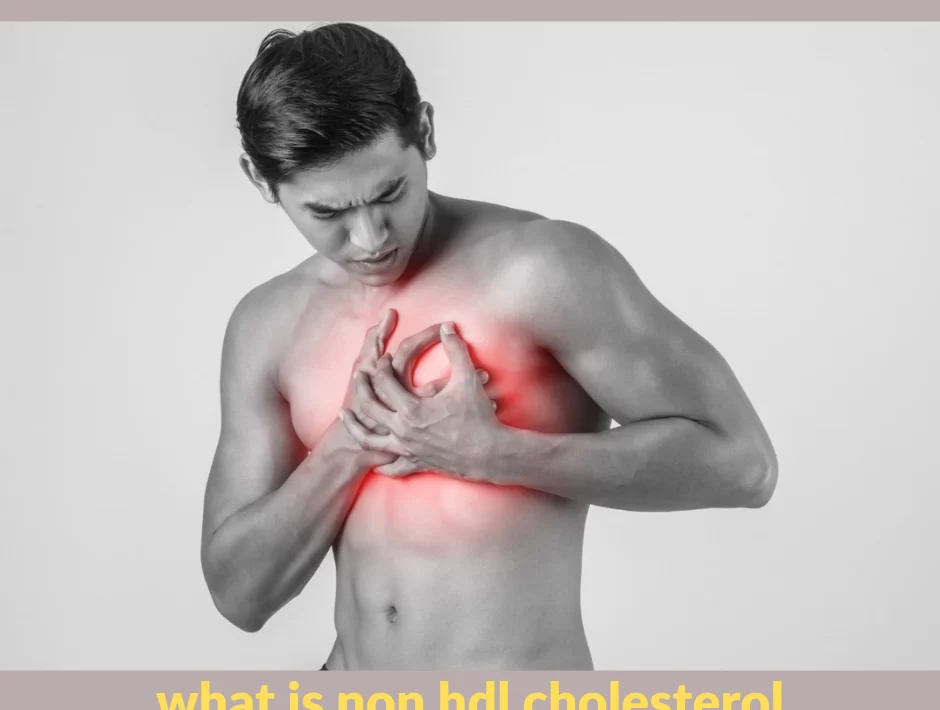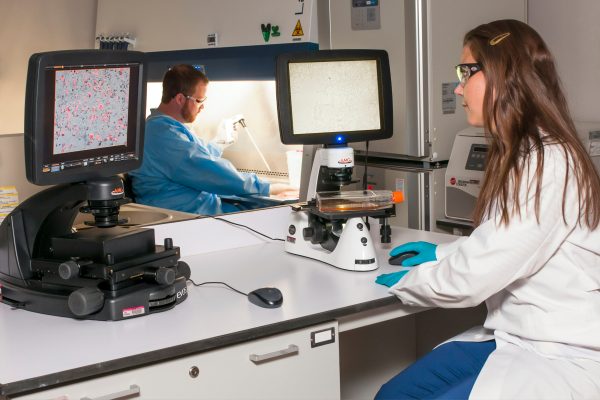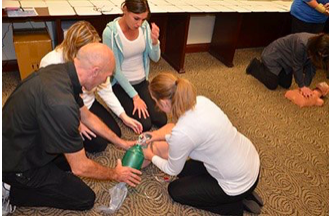Non-HDL cholesterol is a type of cholesterol that has gained attention in recent years as a predictor of heart disease risk. Cholesterol is a waxy substance that is produced by the liver and is essential for various bodily functions. However, high levels of cholesterol in the blood can increase the risk of heart disease, stroke, and other cardiovascular problems. Non-HDL cholesterol is a measure of all the cholesterol particles in the blood, excluding high-density lipoprotein (HDL) particles.
Unlike HDL, which is considered “good” cholesterol and can help protect against heart disease, non-HDL cholesterol is considered a “bad” cholesterol because it includes low-density lipoprotein (LDL), very-low-density lipoprotein (VLDL), and intermediate-density lipoprotein (IDL) particles, all of which contribute to the formation of plaque in the arteries. In this article, we will explore the importance of non-HDL cholesterol, how it is measured, and what levels are considered healthy.
Table of Contents
What is non hdl cholesterol?
Non-HDL cholesterol is the total amount of cholesterol in the bloodstream, excluding high-density lipoprotein (HDL) cholesterol. It includes low-density lipoprotein (LDL), very low-density lipoprotein (VLDL), and intermediate-density lipoprotein (IDL) particles, which are considered “bad” cholesterol because they can contribute to the formation of plaque in the arteries and increase the risk of heart disease and stroke. Non-HDL cholesterol is calculated by subtracting the HDL cholesterol level from the total cholesterol level. It is considered a better predictor of cardiovascular risk than LDL cholesterol alone.
What causes high non-HDL cholesterol levels?
Several factors can contribute to high non-HDL cholesterol levels, including:
Diet: Consuming a diet high in saturated and trans fats can increase LDL and non-HDL cholesterol levels.
Sedentary lifestyle: Lack of regular physical activity can lead to weight gain, which can increase non-HDL cholesterol levels.
Genetics: Inherited conditions such as familial hypercholesterolemia can cause high LDL and non-HDL cholesterol levels.
Age and gender: Non-HDL cholesterol levels tend to increase with age and are generally higher in men than in women.
Certain medical conditions: Conditions such as diabetes, hypothyroidism, and kidney disease can cause high non-HDL cholesterol levels.
Medications: Some medications, such as beta-blockers, corticosteroids, and diuretics, can increase non-HDL cholesterol levels.
Smoking: Smoking can lower HDL cholesterol levels and increase non-HDL cholesterol levels.
What is the difference between LDL and non-HDL cholesterol?
Here’s a table summarizing the main differences between LDL and non-HDL cholesterol:
| LDL Cholesterol | Non-HDL Cholesterol |
| Includes only low-density lipoprotein (LDL) particles. | Includes all the cholesterol particles except high-density lipoprotein (HDL) cholesterol. |
| Often referred to as “bad” cholesterol because it contributes to the formation of plaque in the arteries and increases the risk of heart disease and stroke. | Also considered “bad” cholesterol because it includes LDL, very low-density lipoprotein (VLDL), and intermediate-density lipoprotein (IDL) particles, all of which contribute to the formation of plaque in the arteries. |
| Generally, the main target for cholesterol-lowering treatments such as statins. | Considered a better predictor of cardiovascular risk than LDL cholesterol alone because it includes all the cholesterol particles that can contribute to heart disease. |
| Calculated directly by laboratory tests. | Calculated by subtracting the HDL cholesterol level from the total cholesterol level. |
In summary, while LDL cholesterol represents only one type of cholesterol particle, non-HDL cholesterol includes all the cholesterol particles that can contribute to heart disease, making it a more comprehensive measure of cholesterol levels and cardiovascular risk.
What are the ideal non-HDL cholesterol levels for adults?
The ideal non-HDL cholesterol level for adults varies based on their overall health and risk factors for heart disease. In general, non-HDL cholesterol levels should be kept below 130 milligrams per deciliter (mg/dL) for most adults. However, for individuals with a higher risk of heart disease, such as those with diabetes, high blood pressure, or a history of heart disease, a lower non-HDL cholesterol goal of 100 mg/dL or less may be recommended.
How can I lower my non-HDL cholesterol levels?
Lowering non-HDL cholesterol levels can reduce the risk of heart disease and stroke. Here are some lifestyle changes and medical treatments that can help lower non-HDL cholesterol levels:
Eat a heart-healthy diet
Reduce your intake of saturated and trans fats and eat more fruits, vegetables, whole grains, and lean proteins.
Exercise regularly
Regular physical activity can help lower LDL and non-HDL cholesterol levels.
Lose weight
Losing excess weight can help lower non-HDL cholesterol levels, especially if you have a body mass index (BMI) of 30 or higher.
Quit smoking
Smoking can lower HDL cholesterol levels and increase non-HDL cholesterol levels.
Take cholesterol-lowering medications
Statins and other cholesterol-lowering medications can help lower non-HDL cholesterol levels, especially in people with high cholesterol or a high risk of heart disease.
Manage other health conditions
Conditions such as diabetes, high blood pressure, and hypothyroidism can contribute to high non-HDL cholesterol levels. Treating these conditions can help lower cholesterol levels.
How often should I have my non-HDL cholesterol levels checked?
The frequency of non-HDL cholesterol checks depends on your overall health and risk factors for heart disease. In general, non-HDL cholesterol levels should be checked at least once every five years in adults who are at average risk for heart disease.
Are there any medications that can lower non-HDL cholesterol levels?
Several medications that can lower non-HDL cholesterol levels, especially in people who have high cholesterol or a high risk of heart disease. Here are some of the most common medications used to lower non-HDL cholesterol:
- Statins
Statins are the most commonly prescribed medications for high cholesterol. They work by blocking a substance in the liver that is necessary for producing cholesterol. Statins can lower LDL cholesterol levels and, to some extent, non-HDL cholesterol levels.
- PCSK9 inhibitors
PCSK9 inhibitors are a newer class of cholesterol-lowering drugs that work by blocking a protein in the liver that reduces the liver’s ability to remove LDL cholesterol from the blood. PCSK9 inhibitors can lower LDL and non-HDL cholesterol levels.
- Bile acid sequestrants
Bile acid sequestrants are medications that bind to bile acids in the intestines, preventing them from being reabsorbed into the bloodstream. This causes the liver to produce more bile acids, which in turn lowers LDL and non-HDL cholesterol levels.
- Fibrates
Fibrates are medications that can lower triglycerides, a type of fat in the blood, as well as raise HDL cholesterol levels. Fibrates can also lower non-HDL cholesterol levels to some extent.
- Ezetimibe
Ezetimibe is a medication that works by reducing the absorption of cholesterol from the intestines. It can lower LDL and non-HDL cholesterol levels.
It’s important to talk to your doctor about which medication is best for you based on your overall health and cholesterol levels. In some cases, a combination of medications may be needed to effectively lower non-HDL cholesterol levels.
FAQ
Q1: What are some risk factors for high non-HDL cholesterol levels?
Ans: Risk factors include having a family history of heart disease, high blood pressure, diabetes, being overweight or obese, smoking, and having a sedentary lifestyle.
Q2: Can non-HDL cholesterol levels be lowered through diet alone?
Ans: While dietary changes can help lower non-HDL cholesterol levels, in many cases, medications are needed to effectively lower cholesterol levels.
Q3: How long does it take to lower non-HDL cholesterol levels through lifestyle changes?
Ans: The length of time it takes to lower non-HDL cholesterol levels through lifestyle changes varies from person to person, but generally, it takes several weeks to months to see significant changes.
Q4: Can non-HDL cholesterol levels be too low?
Ans: While there is no set minimum level for non-HDL cholesterol, extremely low levels may increase the risk of certain health problems, such as depression, anxiety, and even hemorrhagic stroke.
Q5: How do I know if my non-HDL cholesterol levels are too high?
Ans: A blood test is needed to determine non-HDL cholesterol levels. If your levels are higher than the recommended target levels, your doctor may recommend lifestyle changes and/or cholesterol-lowering medications to help reduce your risk of heart disease.











